Hangzhou JUNPU Fiber Telecommunication is a professional fiber optical telecom equipment products manufactory since 2008. We are a medium-sized production factory with around 100 workers and 10-25 production lines, equipped with advanced testing instruments and independently developed molds. We provide high-quality products with reasonable cost to all over the world.The mainly advantaged fiber optic communication equipment are fiber optical terminal box, fiber optical splice closure, FTTH optical drop cable, Fiber Optic Patch Cord, Fiber Optical Splitter and EDFA WDM.Let us connect the world by fiber! https://www.junpu-catv.com/
Don't wanna be here? Send us removal request.
Text
EDFA WDM PON
JP08XXEAP (2RU) series is a low noise, high performance, FTTP high power, multi-ports optical amplifier with gain spectrum band within 1540~1565nm. Each output port for optical amplifier has built-in well-performed CWDM. Every external up-link optical port of optical amplifier can connect with OLT PON port very conveniently. Each 1550nm (CATV)'s output optical port multiplex 1310/1490n's data stream, in order to reduce the quantity of the component and improve the index and reliability of the system.
JP08XXEAP edfa booster amplifier can be compatible with any FTTx PON Technology. It offers a flexible and low-cost solution for three-network integration and Fiber to the Home.
JP08XXEAP LCD at the front panel offers the work index of all equipment and warning alarms. The laser will switch off automatically if optical power is missing, which offers security protection for the laser. All the optical port of optical amplifier can be installed in the front panel or back panel.
JP08XXEAP with carrier-class reliability and network security management, high quality, high reliability and excellent cost performance and is ideal for system integrators and system operator.
How Do Fibre Optic Amplifiers and Combiners Work Together?
Fiber optic amplifiers and combiners are two essential components in optical communication systems that can work together to enhance signal transmission and network performance. Here's how they work together:
1. Amplification of Weak Signals:
Fiber optic amplifiers, such as erbium-doped fiber amplifiers (EDFAs), are used to boost optical signals that have weakened as they travel through long-distance fiber optic cables. Amplifiers are strategically placed along the optical network to increase signal strength without converting the optical signal into an electrical one, which can introduce noise and signal degradation.
2. Combining Multiple Signals:
Fiber optic combiners (also known as couplers or multiplexers) are used to combine multiple optical signals into a single fiber. This is especially useful in wavelength-division multiplexing (WDM) systems, where different data streams at different wavelengths are combined onto a single fiber for transmission over long distances.
3. Wavelength Multiplexing:
Combining multiple signals onto a single fiber using WDM technology allows for the simultaneous transmission of multiple data streams at different wavelengths. These signals can travel over the same fiber without interfering with each other. Fiber optic amplifiers placed along the route can amplify all the signals collectively, ensuring their quality and reach.
4. Enhanced Long-Distance Transmission:
By combining multiple signals and amplifying them using fiber optic amplifiers, networks can achieve long-distance transmission with minimal signal loss and improved overall performance. This combination is particularly valuable in telecommunication networks, data centers, and backbone infrastructures where high-capacity, long-haul transmission is required.
Benefits of Using the EDFA WDM PON
1. Increased Bandwidth Capacity:
EDFA WDM PON systems enable the transmission of multiple optical signals at different wavelengths (colors) over a single optical fiber. This allows for a significant increase in bandwidth capacity. Each wavelength can carry a separate data stream, effectively multiplying the network's capacity without the need for additional fibers.
2. Extended Reach:
EDFA amplifiers boost the optical signal power without converting it to electrical signals, thus minimizing signal degradation. This extended reach is particularly valuable in long-haul and rural network deployments where optical signals need to travel over extensive distances without substantial loss in signal quality.
3. Simplified Network Architecture:
WDM PON systems simplify network architecture by consolidating multiple services and wavelengths onto a single fiber. This reduces the complexity of the network, lowers operational costs, and streamlines network management. It also allows for flexible allocation of bandwidth to meet varying customer demands.
4. Enhanced Scalability and Flexibility:
EDFA-based WDM PONs offer scalability to accommodate the growing demand for bandwidth and services. As network requirements change, additional wavelengths can be added to the system without the need for extensive infrastructure upgrades. This flexibility ensures that the network can adapt to evolving customer needs and market demands.
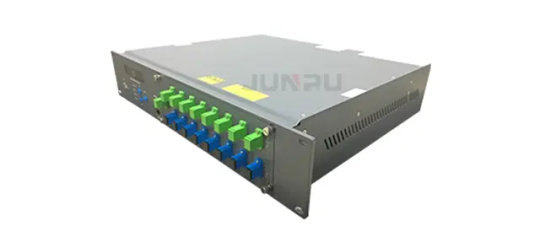
0 notes
Text
EDFA
The JP0816EA(1RU) series is a high-power multi-ports optical amplifier designed for CATV applications. It operates within the gain spectrum band of 1540~1563nm, providing a flexible and cost-effective solution for large-scale CATV coverage in metropolises and medium-sized cities. This amplifier utilizes top-class pump laser and active optical fiber, ensuring long-term and reliable operation. With low noise figure and twin-stage amplification, it offers high-quality signal amplification even at low input power. The front-panel LCD displays equipment status and alerts, while the automatic power-off feature ensures laser security. With options for optical input and network management, it is an ideal choice for system integrators and operators prioritizing reliability and cost-effectiveness.
Types of Erbium-doped Fiber Amplifier
JP0110OEA EDFA
JP0110OEA EDFA
JP0816EA EDFA
JP0816EA EDFA
JP3216EA EDFA
JP3216EA EDFA
Key Components of the EDFA
1. Erbium-Doped Fiber (EDF):
The heart of an EDFA is the erbium-doped fiber, which contains erbium ions (Er3+) incorporated into the silica glass matrix. When optical signals pass through this doped fiber, the erbium ions are excited and emit photons, effectively amplifying the signal. The EDF is the amplification medium in the EDFA.
2. Pump Laser Diodes:
Pump laser diodes are used to excite the erbium ions within the EDF. They emit high-energy photons at a specific wavelength (usually around 980 nm or 1480 nm) that match the absorption bands of erbium ions. These photons are used to "pump" or energize the erbium ions to higher energy levels.
3. Wavelength Division Multiplexer (WDM):
A WDM component is used to combine the input signal (the signal to be amplified) and the pump laser diode signals into the erbium-doped fiber. It ensures that the pump light is efficiently coupled into the EDF to excite the erbium ions.
4. Isolators and Optical Filters:
Isolators and optical filters are used to prevent back reflections and to separate amplified signals from input and output signals. They ensure that amplified light travels in one direction within the EDFA and that the signal-to-noise ratio remains high.
5. Optical Couplers and Connectors:
Optical couplers and connectors are used to couple the input and output fibers to the EDFA. Input signals are fed into the EDF, and the amplified output signals are extracted from the EDFA through these components.
Applications of EDFAs in Long-Haul Optical Networks
Erbium-Doped Fiber Amplifiers (EDFAs) are vital components in long-haul optical networks, enhancing signal strength over extended distances. Here are four key applications:
1. Signal Regeneration: EDFAs boost optical signals, compensating for signal loss in long-distance transmission.
2. Wavelength Division Multiplexing (WDM): EDFAs amplify multiple wavelengths simultaneously, enabling efficient data transmission in WDM systems.
3. Submarine Cable Systems: EDFAs amplify signals across undersea fiber optic cables, facilitating global data connectivity.
Telecommunications Backbone: They serve as signal repeaters in terrestrial optical backbone networks, ensuring data integrity over vast distances.

0 notes
Text
CLOSURE FIBER OPTIC
Closure Fiber Optic is a protective enclosure designed for fiber optic cables. It provides a secure and weatherproof housing for splices, connectors, and other fiber optic components. Closure Fiber Optic ensures the integrity and reliability of fiber optic connections in both indoor and outdoor environments.
Fiber Optic Splice Closure Types
IP68 Fiber Optical Splice Closure
AFAT-002 IP68 Fiber Optical Splice Closure
FATC-001 IP68 Fiber Optical Splice Closure
FATD-0408B IP68 Fiber Optical Splice Closure
FOSC400M33 IP68 Fiber Optical Splice Closure
JP-CTO-16 Closure Fiber Optic IP68 Fiber Optical Splice Closure
IP68 Fiber Optical Splice Closure
Importance of Weatherproofing in Closure Fiber Optic
Protection against moisture: Weatherproofing in closure optical fiber ensures that moisture and water cannot penetrate the enclosure, preventing damage to the fiber optic cables and components, and maintaining reliable connectivity.
Shielding against UV radiation: UV radiation from the sun can degrade the performance of fiber optic cables over time. Weatherproofing helps to shield the cables from UV radiation, prolonging their lifespan and optimizing network performance.
Resistance to temperature fluctuations: Closure Fiber Optic enclosures designed for weatherproofing are built to withstand extreme temperature variations. This ensures that the fiber optic cables and components inside are protected and can maintain consistent performance.
Defense against dust and debris: Weatherproof enclosures create a barrier against dust and debris, preventing them from contaminating the fiber optic cables and affecting signal quality. This is especially important in outdoor or industrial environments where there are higher chances of dust and debris accumulation.
Longevity and reliability: Weatherproofing helps to extend the lifespan of Closure fibre joint enclosure and the components within. By protecting against environmental factors, it ensures that the connections remain secure and reliable, minimizing the need for repair or replacement.
Enhanced network performance: Proper weatherproofing in joint closure fiber optic enclosures ensures that the fiber optic cables and components are protected from external factors. This, in turn, helps to maintain optimal network performance, minimizing signal loss and disruptions.

0 notes
Text
FIBER OPTIC SOLUTION FOR ODN NETWORK
ODN Network
In the current FTTH deployment mode, in order to ensure the quality of the network, a large number of fiber fiber measuring work must be carried out in the controlled environment to prevent dust and other pollutants from entering.
As a leading company in the field of light networks, ODN business layout is global. For industry pain points, it summarizes the idea of integrating simple, Efficient, Economical, Excellent Performance, and the evolution of solutions. The solution, using the on-site direct alternative melting, greatly reducing the workload of on-site melting.
ODN Network
Role Of Fiber Optic In ODN Network
FTTH Optical Cable Network
ODN (Optical Distribution Network) optical wiring network is a FTTH optical cable network based on the PON device. Its role is to provide light transmission channels between OLT and ONU.
ODN
ODN is a network consisting of all passive optical fibers and passive devices (light separats) between two source devices (OLT devices and ONU devices).
FTTH System
The FTTH system consists of three parts: OLT (optical route terminal), ONU (optical user unit), and ODN (optical distribution network). ODN can be divided into three parts: feed line segment, wiring segment and household segment. The key issues in the FTTH system design are the setting of OLT, optical allocation point and onu. Before designing the ODN network architecture, you must fully consider the target area area The characteristics of the domain and the characteristics of the network routing.
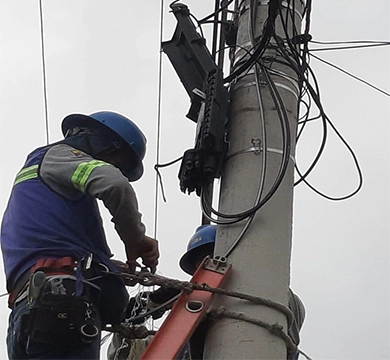
0 notes
Text
FIBER OPTIC SOLUTION FOR TELECOMMUNICATION
Telecommunication
The basic elements of the communication system include the sender, the channel, and the receiver. The sender is responsible for encoding or converting information into signals suitable for transmission. The signal is transmitted to the receiver through the channel. During the transmission, the signal will inevitably change due to the existence of noise. The receipt machine tries to apply appropriate decoding methods to restore the original information from the deterioration signal. An important indicator of describing channels is bandwidth.
The structure of the communication system can be a point-to-point or a little pair, and the broadcast is a special form of multi-point communication.
Telecommunication
Role Of Telecommunication Network
Telecommunications Network
The telecommunications network is a system composed of interconnected communication devices and equipment, enabling people to communicate with each other from long-distance. These networks use various technologies and protocols to promote the transmission of voice, data, and video signals between pronunciation (including smartphones, computers and other communication devices).
Communication Services
In recent years, with the promotion of technological progress and changing communication needs, the telecommunications network has undergone major changes. Modern networks use advanced technologies such as 5G, optical cables, and cloud computing to provide users with faster and more reliable communication services. The telecommunications network is an important part of modern communication infrastructure, allowing people to communicate and contact each other in an innovative way.
CAT3 Cable
Large users can get services by bringing fiber optic fibers to their places, and optical fibers can end on integrated digital sockets. The small user market is promoted by more bandwidth demand for reservations to connect to the Internet through the same CAT3 cable.
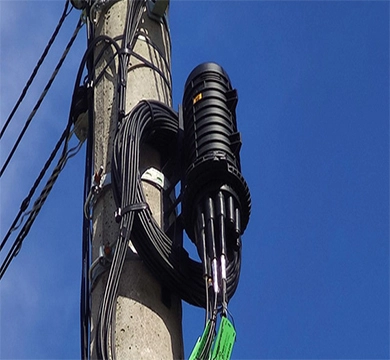
0 notes
Text
FIBER OPTIC SOLUTION FOR FTTH
FTTH
Optical fiber household (FTTP), also known as fiber-to-house (FTTH), refers to a broadband telecommunications system. It is based on optical cables and adopts multiple high-end services such as telephone triple playback, broadband Internet and television to households or enterprises. Optical fiber communication is widely used as information transmission media with its unique anti-interference, light weight, and large capacity. It is the most economical and effective to use existing transmission lines.
FTTH
Role Of FTTH Network
Transmission Speed of Optical Fibers
The transmission speed of optical fibers has absolute advantages in response speed in the network. The optical fiber Internet FTTH and ordinary broadband Internet ADSL are two different Internet methods. The biggest difference between the two is that the transmission medium is different. The optical fiber Internet access is transmitted by the optical signal, and the ordinary broadband Internet access is the transmission of weak electricity signals. Therefore, the response speed of the optical fiber Internet will be much faster than that of ordinary broad band Internet access.
Transmission Medium
Due to the influence of the transmission medium, the theory of the highest bandwidth value of ordinary broadband ADSL is around 8M. The maximum bandwidth value of optical fiber broadband can be very high, and the 100M used in households is now popular. The enterprise type is 1000m or higher.
Optical Fiber Internet
Optical fiber Internet is dual-channel and ordinary broadband is one-way. Usually we involve two aspects of two broadband during the Internet, upward and network downward. If you use ordinary broadband (ADSL) when uploading files, it will also be affected. This is the one-way decision of ordinary broadband (ADSL). The advantage of the optical fiber Internet (dedicated line access) is that when you upload or download, the other party will not be affected. Of course, when the bandwidth is 1M-2M, the advantages of optical fiber and ordinary ADSL broadband are not obvious. When the bandwidth is increased to 4M or higher, the advantages of fast fiber speed can be clearly reflected.
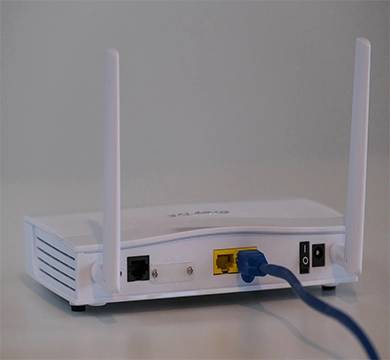
0 notes
Text
FIBER OPTICAL SOLUTION
Fiber Optical Communication Solution is a comprehensive and advanced system designed for efficient and reliable data transmission over long distances. It consists of various components such as fiber optic cables, transceivers, optical amplifiers, and multiplexers. This solution offers high-speed data transfer, wide bandwidth, and low latency, making it ideal for telecommunications, internet service providers, and corporate networks.
ODN Network
Optical Distribution Network (ODN for short). ODN is an FTTH optical cable network based on PON equipment. Its role is to provide optical transmission channels between OLT and ONU. In terms of function, ODN can be divided into four parts: the feeder optical cable subsystem, the distribution optical cable subsystem, the home line optical cable subsystem and the optical fiber terminal subsystem from the central office end to the user end.
Fiber Optic Solution for Triple Play Network
Triple Play Network
In short, the "Triple Play Network" are the integration between cable television, telecommunications and computer communication. The purpose is to build a sound and efficient communication network to meet the needs of social development. The three-network integration has high requirements for the application practice of technology. In the future, mobile phones can watch TV and surf the Internet. TV can call, Internet access, and computer can also call and watch TV.
Fiber Optic Solution for Telecommunication
Telecommunication
Telecommunication refers to the use of electronic technology to pass information between different places. Telecom includes different types of long-distance communication methods, such as: radio, telegraph, TV, telephone, data communication, and computer network communication. Telecom is an important pillar of an information society.
Fiber Optic Solution for Data Center
Data Center
Internet data center (IDC) refers to a comprehensive device (including high-speed Internet access bandwidth, high-performance LAN, safe and reliable computer room environment, etc.), professional management, and perfect application service platform. Based on this platform, IDC service providers provide customers with Internet basic platform services (server hosting, virtual hosting, mail cache, virtual mail, etc.), and various value-added services (rental services, domain name system services, load balancing systems, database systems, data backup services, etc.).
Fiber Optic Solution for FTTH
FTTH
Fibre (Fiber) to the Home (FTTH) is a transmission method for optical fiber communication. Specifically, FTTH refers to installing the optical network unit (ONU) at home users or business users. It is the optical access application type of the optical access to the user except FTTD (optical fiber to the desktop). The significant technical characteristics of FTTH are not only providing greater bandwidth, but also enhance the transparency of the network for data format, rate, wavelength, and protocols, relax the requirements of environmental conditions and power supply, and simplify maintenance and installation. PON technology has become a hot spot for global broadband operators, and is considered one of the best technical solutions to realize FTTH.
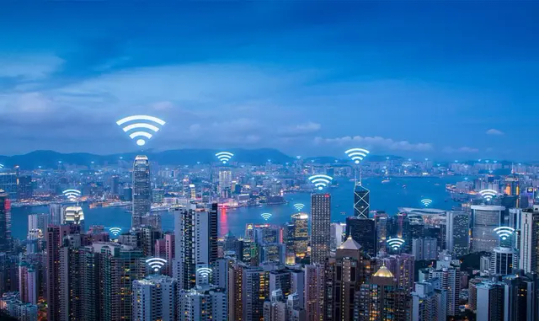
0 notes
Text
FIBER OPTIC SOLUTION FOR DATA CENTER
Data Center
Infrastructure that meets the needs of website system hosting outsourcing services,, this facility includes stable and reliable broadband Internet access and safe and reliable telecommunications-level computer room environment.
With high-quality value-added service functions, including system maintenance (such as system configuration, software installation, data backup, fault exclusion, etc.); management services (such as bandwidth management, traffic analysis, invasion detection, system vulnerability diagnosis, data backup, load balancing, CACHE services, etc.); support services (such as technical support hotline, etc.); integrated services (such as providing data centers, integrated communication and IT professional services. Service, etc.), etc.
Data Center
Role Of Data Center Network
Four Major Characteristics
Yang Yougui, a senior vice president of Huawei and CEO of the Energy Corps of the Data Center, concluded that there are four major characteristics of the next generation of data centers, namely low-carbon co-life, minimalist fusion, autonomous driving, and safe and reliable.
Era of Intelligence
In the era of intelligence, changes in data traffic will bring high secrets and large-scale development requirements for data centers. At the same time, in the low-carbon era, data centers should pay more attention to resource use and resource recovery.
Data Center
Safety and reliability are the biggest demands of the data center and the foundation of everything. "On the one hand, through artificial intelligence, from passive security management to active safety management, from the management of the incident to advanced management. On the other hand, the structure is fully modular and the security defense line is fully constructed."
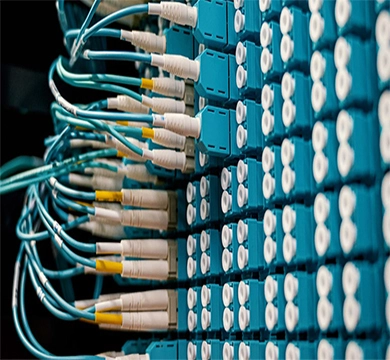
1 note
·
View note